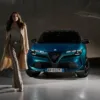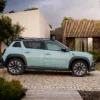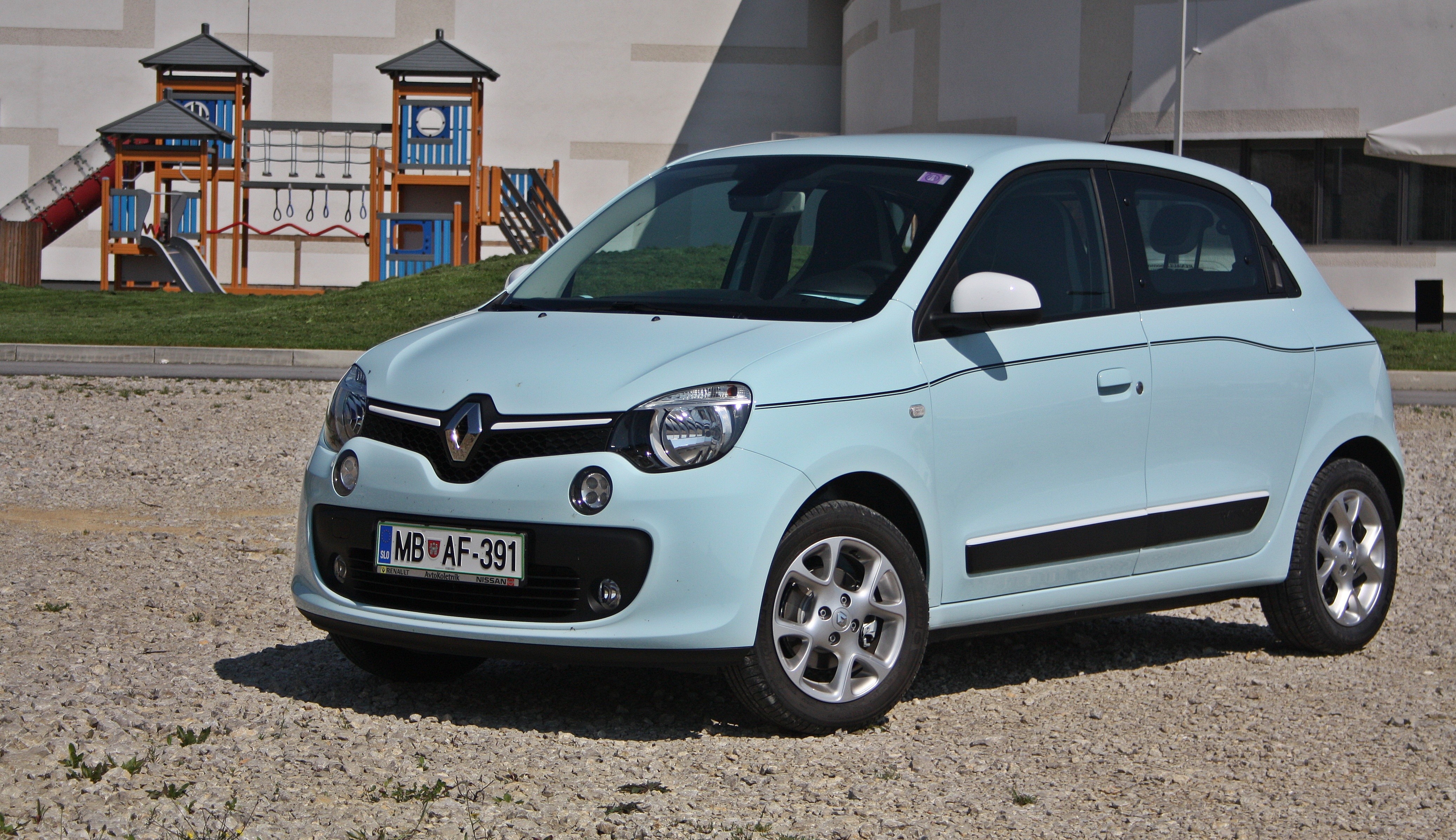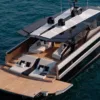The new twingo brings a lot of new things, in addition to a new and fresh shape, a new platform and a completely different design from the current one. Namely, the engine and drive are (moved) to the rear, which has led to a more spacious passenger cabin and better weight distribution. Inside, however, it means a completely redesigned cabin, more space and a lot of powerful multimedia.
New Renault Twingo is with 3.6 meters forehead slightly smaller than its predecessor, but it still brings a more spacious interior, better agility and feel smaller rally circuit, which now measures instead of 10.55 meters only 8.6 meters. Twingo III has also lost a bit of weight, otherwise it has weight decreased by around 80 kilograms and now it is from 864 to 943 kg.

There is also a lot of new inside, where passengers are enchanted by a completely new dashboard, steering wheel and front seats (with a one-piece backrest), and despite the new working environment, there is a feeling of belonging to the brand. Surprised (positively) below flattened steering wheel, but we were less impressed by the fact that the windows in the second row can only move laterally, like in the old "Yugets", if your memory goes back that far.
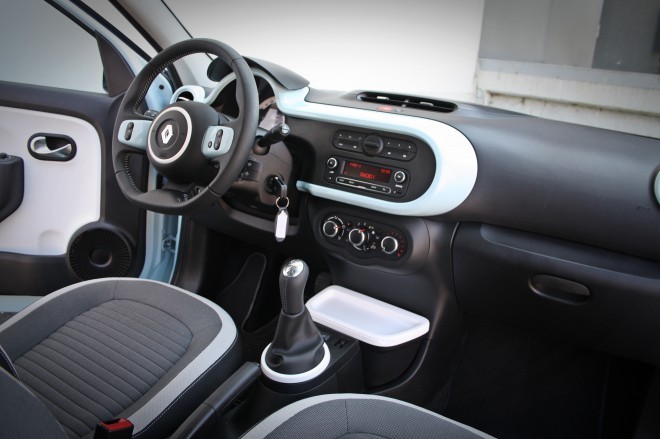
There is a little more space in both rows of seats than before, but the seating is also similarly high, which can be annoying. The same goes for the fact that Twingo III it does not have a tachometer, but it can do this role as well as the role of navigation and economical driving assistant (driving eco2 app.) takes over your smartphone, which you can easily place on the audio device and connect to it (or to the car) via a bluetooth connection.
Now the twingo can also have one navigation namely, two are now available: the first is the aforementioned one the R&Go system, where your smart phone simply connect to attached carrier, and then you use navigation via a bluetooth connection and a special application. Tickets for Slovenia and surrounding countries are free, for others (eg Western Europe) you have to pay extra. The second system is already known R-link, where Twingo received the suffix evolution, which means the second generation of this multimedia system.

Customers can choose between by four basic equipment packages: authentique (they plan to sell very few), expression (manual air conditioning, speed limiter, ESC, electrical package, audio device, R&Go system, LED daytime running lights) and dynamique (fog lights, alloy wheels, cruise control, leather steering wheel and gear lever, body entirely in color), and the sport package means an upgrade of the latter and, as the name suggests, pursues a greater degree of sportiness. The latter also adds partially leather seats, aluminum pedals and the top of the gear lever, as well as more color in the interior). Many additional equipment packages are also available, such as: comfort, techno, seats, safety, etc. packages. Among the accessories we also find systems such as lane assist, which we are not used to in this segment, and parking aids and heated front seats are also available.
READ MORE: Test: Renault Twingo Sport 1.6 16V
The engine range consists of two petrol engines: SCe70 and TCe90, where the first means a 1.0-liter naturally aspirated unit that develops 51 kW, and the other is the well-known 0.9-liter turbo that can 66 kW and 135 Nm of torque. When the engine consumes from 4.2 to 4.5-liter and omit from 95 to 105 grams of CO2, and the turbo gasoline engine makes do with 4.3 liters of fuel and emits 99 grams of CO2.
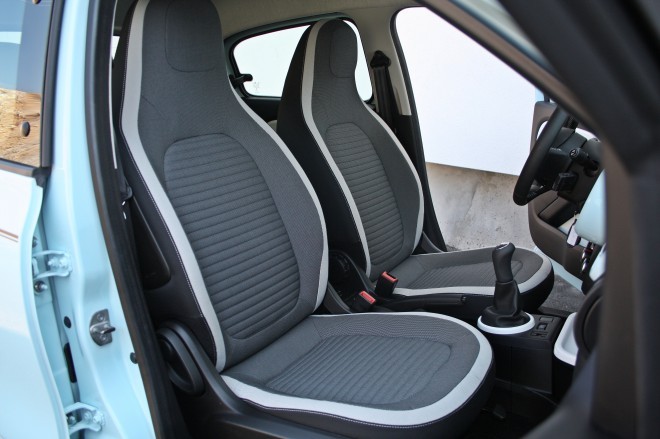
The gearbox is currently only a five-speed manual, we can expect more in the course of next year EDC automatic transmission. RS version it is not planned for now, but according to sources close to the factory, it can only be expected in two years. Prices are starting 8,990 euros and end at 11,990 euros, and the importer offers more to all buyers thousand euros additional discount, so prices start a little under eight thousand.

More information at: novi-twingo.renault.si
